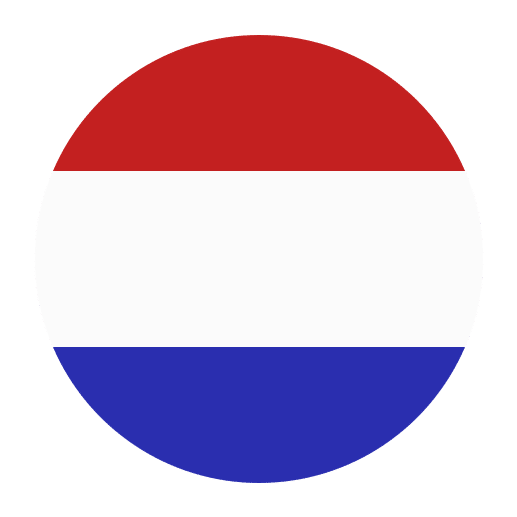Learning Dutch can be an exciting and rewarding experience, especially when you dive into its unique grammatical features. One of the aspects that might intrigue you as you advance in your Dutch language journey is the concept of reflexive verbs. Reflexive verbs are common in many languages, including English, but their usage can vary significantly from one language to another. Understanding when and how to use Dutch reflexive verbs will not only enhance your grammatical competence but also help you communicate more naturally and accurately. In this article, we will explore the mechanics of Dutch reflexive verbs, their usage, and provide practical examples to help you master this aspect of the language.
What Are Reflexive Verbs?
Reflexive verbs are verbs that are accompanied by a reflexive pronoun, indicating that the subject of the verb is also the object of the action. In simpler terms, the action of the verb is performed by the subject upon itself. For example, in English, reflexive verbs appear in sentences like “She dressed herself” or “I taught myself.” The reflexive pronouns in these sentences are “herself” and “myself.”
In Dutch, reflexive verbs function similarly. They are often used with reflexive pronouns such as “zich” (oneself), “me” (myself), “je” (yourself), “zich” (himself/herself/itself), “ons” (ourselves), and “zich” (themselves).
Reflexive Pronouns in Dutch
Here is a breakdown of the Dutch reflexive pronouns:
– **First person singular**: me (myself)
– **Second person singular (informal)**: je/jou (yourself)
– **Third person singular**: zich (himself, herself, itself)
– **First person plural**: ons (ourselves)
– **Second person plural**: je/jullie (yourselves)
– **Third person plural**: zich (themselves)
When to Use Reflexive Verbs
Reflexive verbs in Dutch are used in various contexts, just like in English. Here are some common scenarios where reflexive verbs are essential:
Daily Routines and Personal Care
Many reflexive verbs in Dutch are related to daily routines and personal care. These verbs describe actions that people typically do to themselves. For example:
– **Zich wassen** – to wash oneself
– **Zich aankleden** – to dress oneself
– **Zich scheren** – to shave oneself
– **Zich opmaken** – to put on makeup
Examples:
– Ik was me elke ochtend. (I wash myself every morning.)
– Ze kleedt zich snel aan. (She dresses herself quickly.)
Emotions and Feelings
Reflexive verbs are also used to describe emotions and feelings. These verbs often indicate that the subject is experiencing a particular emotion.
– **Zich voelen** – to feel
– **Zich schamen** – to feel ashamed
– **Zich vervelen** – to be bored
– **Zich verbazen** – to be surprised
Examples:
– Hij voelt zich gelukkig. (He feels happy.)
– Wij schamen ons voor onze fouten. (We are ashamed of our mistakes.)
Reciprocal Actions
Reflexive verbs can express reciprocal actions, where two or more subjects perform the same action on each other. In these cases, the reflexive pronoun indicates a mutual action.
– **Zich ontmoeten** – to meet each other
– **Zich verontschuldigen** – to apologize to each other
– **Zich verzoenen** – to reconcile with each other
Examples:
– We ontmoeten ons elke week. (We meet each other every week.)
– Zij verontschuldigen zich na het argument. (They apologize to each other after the argument.)
How to Use Reflexive Verbs
Using reflexive verbs in Dutch is straightforward once you understand the structure. Here are the steps to correctly form sentences with reflexive verbs:
Identify the Reflexive Verb
First, identify whether the verb is reflexive. Reflexive verbs in Dutch often have the reflexive pronoun “zich” included in their infinitive form, such as “zich wassen” (to wash oneself) or “zich schamen” (to feel ashamed).
Conjugate the Verb
Next, conjugate the verb according to the subject of the sentence. The verb conjugation follows the standard rules of Dutch verb conjugation.
For example, with the verb “zich wassen”:
– Ik was me. (I wash myself.)
– Jij wast je. (You wash yourself.)
– Hij/zij/het wast zich. (He/she/it washes himself/herself/itself.)
– Wij wassen ons. (We wash ourselves.)
– Jullie wassen je. (You wash yourselves.)
– Zij wassen zich. (They wash themselves.)
Place the Reflexive Pronoun
Place the appropriate reflexive pronoun after the conjugated verb. The reflexive pronoun should match the subject of the sentence. Here’s a quick reference:
– **Ik** (I) – **me**
– **Jij/je** (you, informal singular) – **je**
– **Hij/zij/het** (he/she/it) – **zich**
– **Wij/we** (we) – **ons**
– **Jullie** (you, plural) – **je**
– **Zij/ze** (they) – **zich**
Common Dutch Reflexive Verbs
To help you get started, here is a list of common Dutch reflexive verbs along with their English translations and example sentences:
– **Zich haasten** – to hurry
– Ik moet me haasten om op tijd te komen. (I have to hurry to be on time.)
– **Zich herinneren** – to remember
– Kun je je de vakantie herinneren? (Can you remember the vacation?)
– **Zich inschrijven** – to enroll
– Hij heeft zich ingeschreven voor de cursus. (He has enrolled in the course.)
– **Zich ontspannen** – to relax
– Ze ontspannen zich in het weekend. (They relax on the weekend.)
– **Zich voorbereiden** – to prepare
– Wij bereiden ons voor op het examen. (We are preparing for the exam.)
– **Zich vergissen** – to be mistaken
– Ik heb me vergist in de datum. (I was mistaken about the date.)
Reflexive Verbs vs. Non-Reflexive Verbs
It’s essential to note that not all verbs are reflexive, and some verbs can be both reflexive and non-reflexive, depending on the context. For instance, consider the verb “wassen” (to wash):
– Reflexive: Ik was me. (I wash myself.)
– Non-reflexive: Ik was de auto. (I wash the car.)
In the reflexive form, the action is performed on oneself, while in the non-reflexive form, the action is performed on something else.
Similarly, “aankleden” (to dress) can be reflexive or non-reflexive:
– Reflexive: Zij kleedt zich aan. (She dresses herself.)
– Non-reflexive: Zij kleedt de baby aan. (She dresses the baby.)
Understanding the difference between reflexive and non-reflexive usage is crucial for accurate communication in Dutch.
Practical Tips for Mastering Dutch Reflexive Verbs
Mastering Dutch reflexive verbs requires practice and attention to detail. Here are some practical tips to help you along the way:
Practice Regularly
Incorporate reflexive verbs into your daily practice routines. Use them in sentences, write short paragraphs, and try to include them in conversations. The more you practice, the more natural their usage will become.
Use Flashcards
Create flashcards with reflexive verbs and their meanings. On one side, write the Dutch verb and on the other side, the English translation. Review them regularly to reinforce your memory.
Listen and Observe
Pay attention to how native Dutch speakers use reflexive verbs in conversations, on TV shows, and in written texts. Observing their usage in context will help you understand when and how to use them correctly.
Engage with Native Speakers
Practice speaking with native Dutch speakers whenever possible. Engaging in conversations will give you real-life experience with reflexive verbs and help you become more comfortable using them.
Use Online Resources
Take advantage of online resources, such as language learning apps, websites, and forums. Many of these platforms offer exercises and quizzes specifically designed to help you practice reflexive verbs.
Conclusion
Dutch reflexive verbs are an integral part of the language, and mastering them will greatly enhance your ability to communicate effectively. By understanding the mechanics of reflexive verbs, knowing when to use them, and practicing regularly, you will become more confident in your Dutch language skills. Remember to pay attention to the context, practice consistently, and immerse yourself in the language as much as possible. With time and dedication, you will find that using Dutch reflexive verbs becomes second nature. Happy learning!

